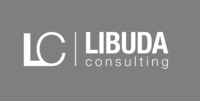
Compliance 2020 in the SME sector
Dirk Libuda, Lawyer, Compliance Consultant and Interim Manager, LC | LIBUDA consulting
Published in: DiALOG - THE MAGAZINE FOR ENTERPRISE INFORMATION MANAGEMENT | 2020
Excellence in core business and compliance Is it enough for SMEs to somehow comply with the law? Are only corporations such as Siemens, VW & Co. exposed to significant risks in the event of legal violations? Does a code of conduct quickly copied from a competitor and a short speech at the company party make all potential risks disappear into thin air?
European and German legislators are motivating companies in their own way to ensure that their business activities comply with the law, as exemplified by the "megatopic" GDPR or the current development of the Association Sanctions Act. Companies are also increasingly the focus of official investigations. Penalties are increasing, most recently clearly recognisable in data protection fines of several million euros. Another driver of these changes is certainly the media, the fourth estate of the state. The press loves scandals. And finally, society no longer tolerates companies cheating their way through, optimising themselves at the expense of others.

However, pressure from legislators, authorities or the media should not be the decisive driving force behind action, but rather an entrepreneurial conviction to do something meaningful for the company and its employees, business partners and even society with a value-orientated culture. Acting sustainably, creating value for all stakeholders through entrepreneurial performance, naturally means acting in a compliant manner. This is not possible with mediocrity. This is what excellence in compliance means.
Even the best companies make mistakes - learn from them
As a medium-sized company, wanting to act in a legally compliant manner means not only establishing rules but also recognising significant deviations from the guidelines by employees or business partners. An essential element of this is a reporting system for reporting violations and errors.
"Compliance is not hype, not a trend. It's a question of attitude."
What needs to be done? Firstly, comprehensible, transparent and efficient processes for receiving reports must be defined, e.g. by telephone, in person and via an online platform. Furthermore, the organisation of confidential and professional processing must be defined. Labour and data protection issues need to be clarified. A key factor for the successful introduction of a whistleblowing system is a professional communication campaign. This starts with messages from the company management ("tone from the top"), conveys a positive basic attitude and allays fears of abuse in favour of whistleblowing.
Once a report has been received, things really get going. It must now be clarified whether there is any truth to the allegations. To do this, a neutral, reliable body must be commissioned and authorised to initiate all necessary measures for clarification. Suitable persons should be carefully selected for this purpose: Can a compliance officer be found internally? Or is it better to involve an external lawyer of trust or compliance expert who can support the internal compliance coordinator, for example, in correctly assessing the information from a legal perspective? Good networking is also important, particularly with HR, Audit and CSR. If it later transpires after the internal investigation has been completed that employees or external business partners have not complied with the established rules or applicable laws, appropriate consequences must be drawn. Depending on the severity of the offence, these range from retraining an employee to terminating the business relationship with a business partner and claiming damages.
Taking action out of self-motivation
Anyone who manages a company moves in strategic, operational and legal risk areas. However, this does not mean doing everything 100% correctly and compliantly. It is crucial to recognise the key risks for the respective company, to adapt to them and to act in a risk-adequate manner. What is clear for "business" should also apply to other parameters of good corporate governance. Those who act decently and sustainably take their employees with them through exemplary leadership. Understood in this way, compliance is not a chore but an opportunity to continuously develop a company. Avoid violations wherever possible, because they cost time and money. And to learn from human error, not to be afraid of mistakes.
If shareholders, company management and executives have managed to establish compliance as a central cornerstone of the corporate strategy and live this in everyday life, then there is no reason to fear official sanctions. Investing in excellent compliance pays off in the long term. Compliance is not hype, not a trend. It is a question of attitude.
"Investing in excellent compliance pays off in the long term."
However, pressure from legislators, authorities or the media should not be the decisive driving force behind action, but rather an entrepreneurial conviction to do something meaningful for the company and its employees, business partners and even society with a value-orientated culture. To act sustainably, to make the company's performance create value for all stakeholders, naturally means to act compliantly. This is not possible with mediocrity. This is what excellence in compliance means.
Mistakes happen even in the best company - learning from mistakes
As a medium-sized company, wanting to act in a legally compliant manner means not only establishing rules but also recognising significant deviations from the requirements by employees or business partners. An essential element of this is a reporting system for reporting violations and errors.
Dirk Libuda works with LC | LIBUDA consulting as a freelance compliance consultant and interim manager for medium-sized companies. He was previously responsible for the Legal & Compliance department of an international trading company for many years.
www.libuda-consulting.com
